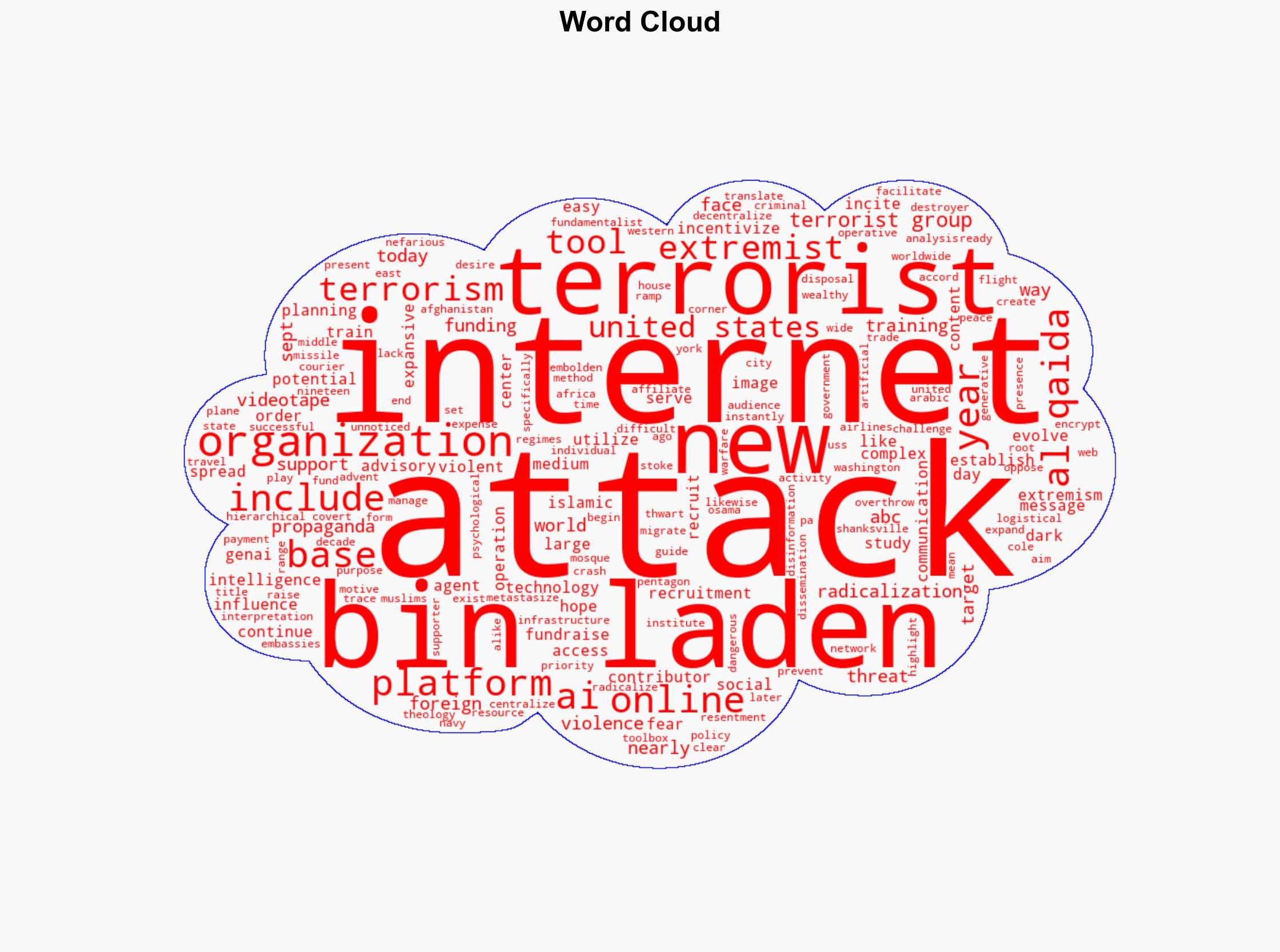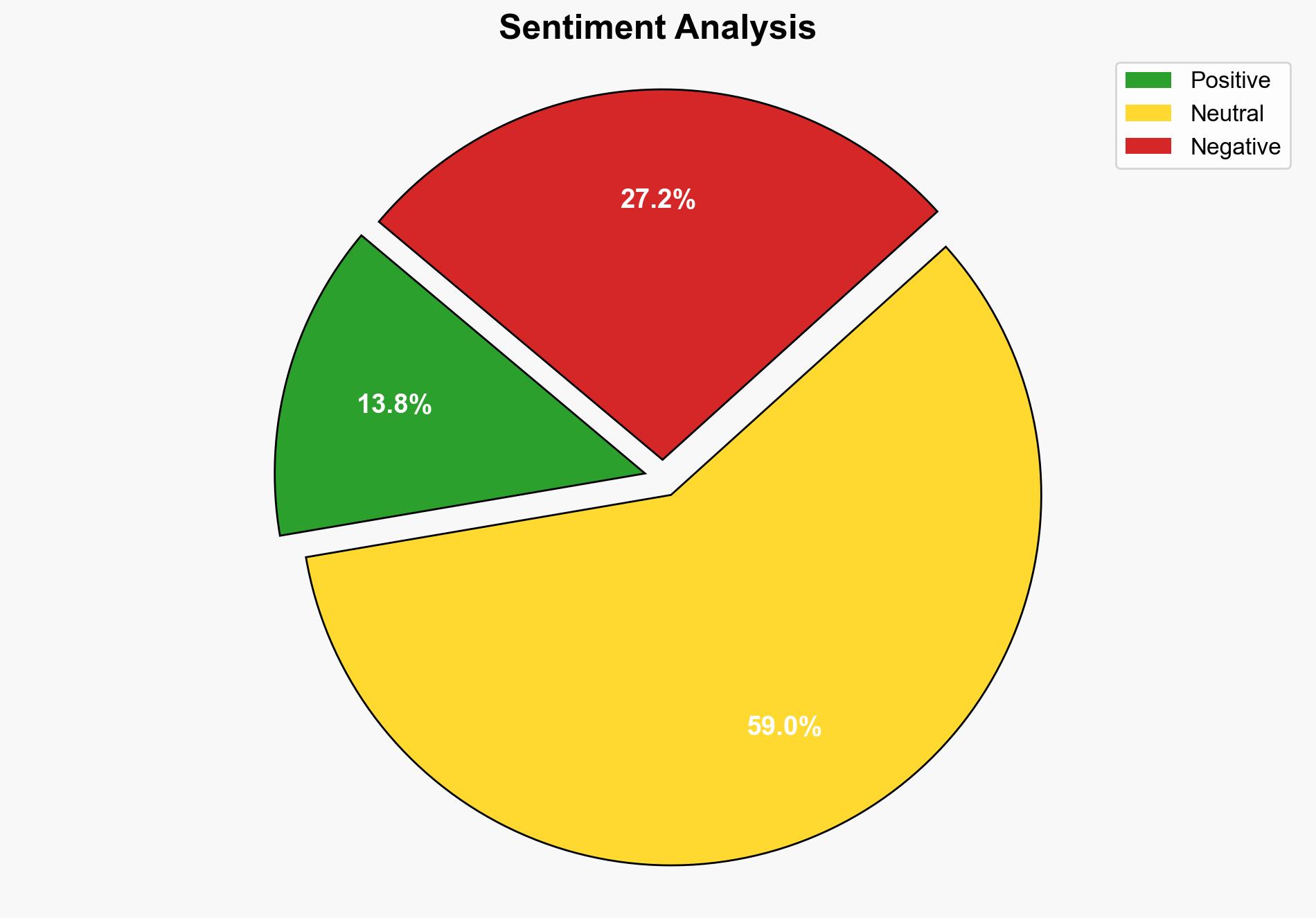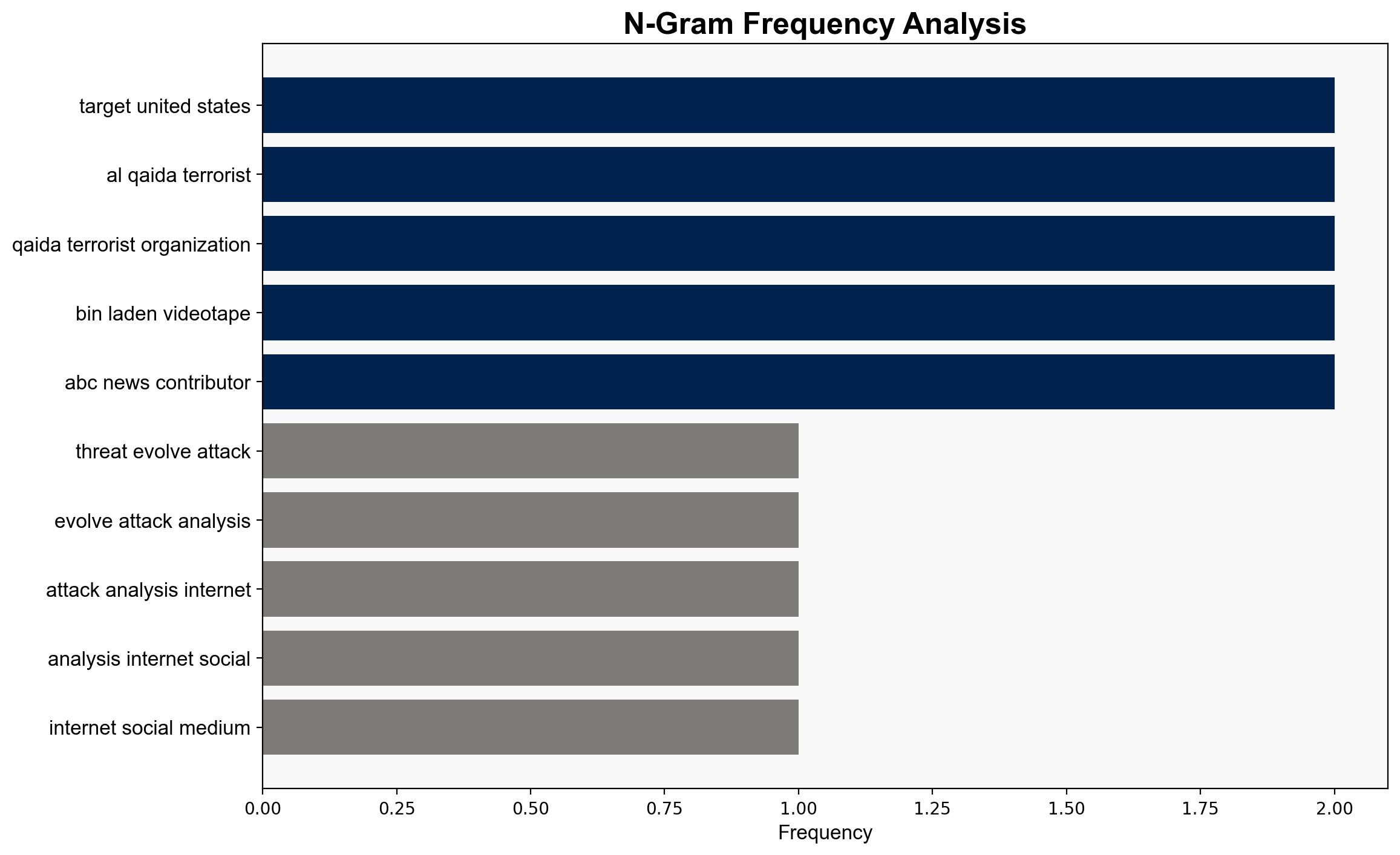How threats have evolved since 911 attacks ANALYSIS – ABC News
Published on: 2025-09-11
Intelligence Report: How threats have evolved since 911 attacks ANALYSIS – ABC News
1. BLUF (Bottom Line Up Front)
The evolution of terrorist threats since the 9/11 attacks has shifted from centralized, large-scale operations to decentralized, internet-facilitated activities. The most supported hypothesis is that terrorist groups have adapted by leveraging digital platforms for recruitment, radicalization, and operational planning. Confidence level: High. Recommended action: Enhance cybersecurity measures and counter-radicalization efforts online.
2. Competing Hypotheses
1. **Hypothesis A**: Terrorist threats have evolved to become more decentralized and internet-based, utilizing social media and AI for recruitment and operations.
2. **Hypothesis B**: Despite technological advancements, traditional hierarchical terrorist organizations remain the primary threat, with internet use being supplementary rather than central.
Using Analysis of Competing Hypotheses (ACH), Hypothesis A is better supported due to the documented shift towards online radicalization and the use of AI tools by terrorist groups, as highlighted in the source text.
3. Key Assumptions and Red Flags
– **Assumptions**: Hypothesis A assumes that technological advancements are accessible and effectively utilized by terrorist groups. Hypothesis B assumes that traditional methods still hold significant operational value.
– **Red Flags**: Potential overestimation of AI’s current capabilities in terrorist activities. Lack of detailed evidence on the effectiveness of online radicalization.
4. Implications and Strategic Risks
The shift towards internet-based operations increases the risk of rapid radicalization and recruitment, potentially leading to more frequent but smaller-scale attacks. The use of AI could enhance the sophistication of propaganda and operational planning, posing a significant cybersecurity threat. Geopolitically, this decentralization complicates international counter-terrorism efforts.
5. Recommendations and Outlook
- Enhance monitoring and regulation of online platforms to detect and counter extremist content.
- Invest in AI-driven tools for early detection of radicalization patterns.
- Scenario Projections:
- Best: Successful international cooperation leads to significant disruption of online terrorist networks.
- Worst: Increased frequency of small-scale attacks due to unchecked online radicalization.
- Most Likely: Continued adaptation by terrorist groups with sporadic, decentralized attacks.
6. Key Individuals and Entities
– Osama bin Laden (historical reference)
– Al-Qaida (organization)
7. Thematic Tags
national security threats, cybersecurity, counter-terrorism, regional focus





